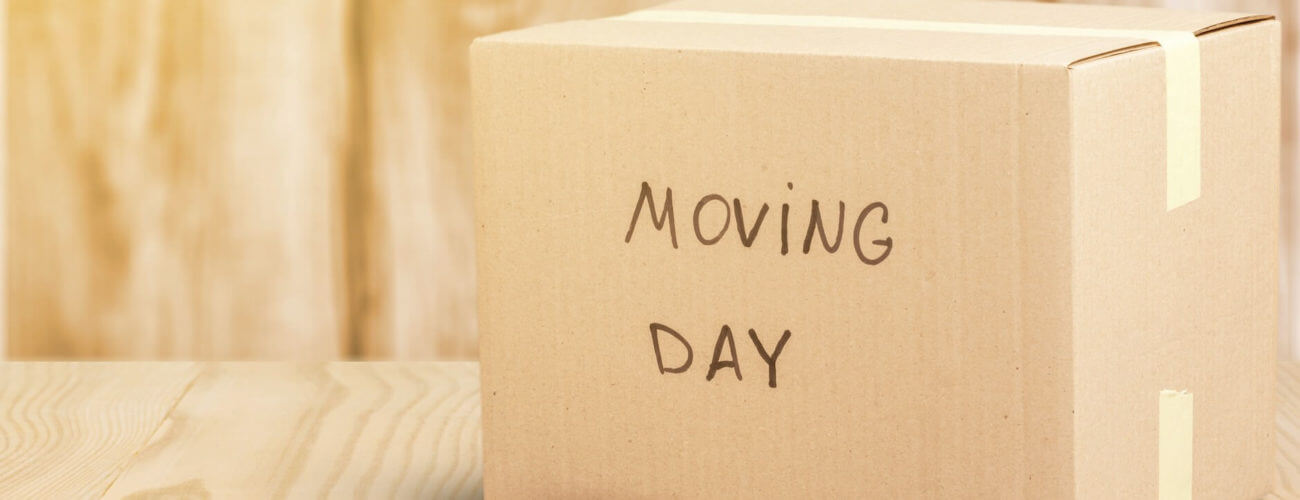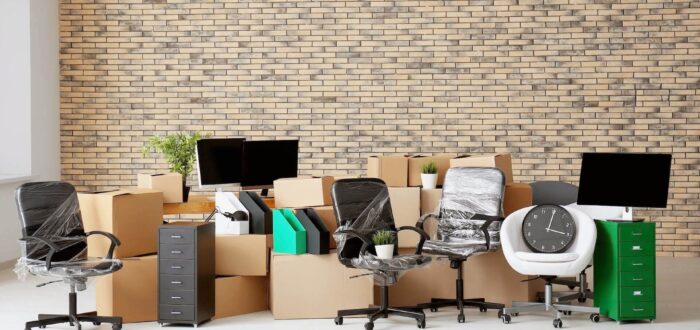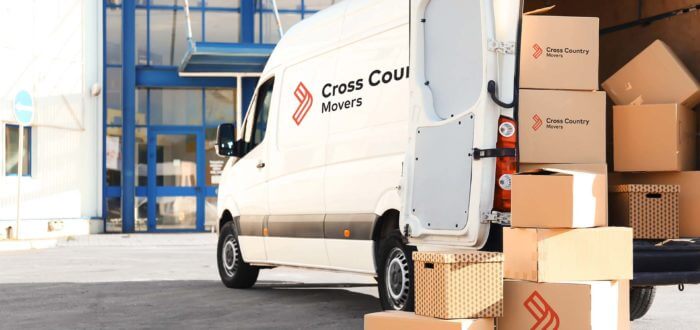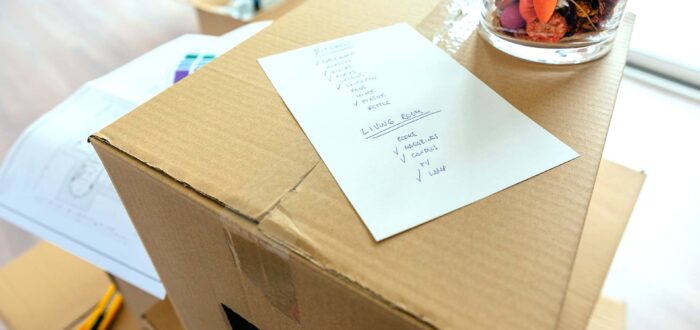

The Ultimate List of Moving Hacks to Make Your Relocation Painless
Posted in Moving Tips & Tricks on October 26, 2020
Is your spine chilling and hair rising from the thought of an approaching move? If so, you’re not the only one who thinks that long-distance relocation is a real nightmare. But, with the right moving hacks, it can be quite simple. The only thing you need is excellent preparation and some relocation tips to kick off your move.
Have you created your household inventory list? And you’ve already prepared your colorful moving binder, a handy organizational tool, without which a relocation would be real mayhem, right?
These are excellent preparatory steps to gather all the necessary paperwork and documents, such as contracts, expense-related notes (more commonly known as moving budget), checklists (starting from its majesty moving to-do list), different notes, etc.
But, what about all those things that are usually taken for granted, such as how to pack clothes for moving or dealing with packaging fragile items? You might say there’s no difference between packing the most important documents and your kitchen appliances – you declutter, store what you need, and leave behind what is old or out-of-date.
Yes, in theory, it sounds very straightforward, but in practice, it’s another story. As soon as you start, you’ll face many questions and dilemmas related to packing supplies, your valuable possessions, moving essentials, or your dog’s needs during this chaos if you’re moving with pets.
That’s why we’ve compiled a list of handy and practical hacks to make moving easier. And before we start, we have the first tip for you: start your packing as soon as you decide you want to move. That means – now. And let’s find out how.
Moving Hacks Before the Relocation Starts
Before you hire packing services or try to pack yourself, consider obtaining packing supplies, having a clear plan for decluttering, and what room should be packed first. These are tasks that require your time, energy, and determination to perform them all within a set timetable.
Because once you book a company like Cross Country Movers, you won’t be able to delay your relocation date. They have tight schedules, and deadlines must be met. So, try to efficiently organize your daily activities, avoid procrastination, and finish everything you set out to do before moving.
But for starters, let’s find out more about the first steps you should follow as a precondition for hacks for moving.
Some Household Items Are Perfect Alternatives to Packing Paper and Moving Boxes
You don’t need to be a relocation expert to know that buying new packing materials can be really pricey. Even though you’ve probably heard so many stories about new and similar size packages you should obtain (read: buy) because they will limit the movers’ job to pack a moving truck, why wouldn’t you be cunning and resourceful?
You can purchase special dish packing boxes or mirror boxes for fragile and delicate objects if needed, but there are plenty of objects you can use instead of cardboard packages. And, truth be told, you already have them in your own house:
- Suitcases
- Briefcases
- Baskets
- Hampers
- Plastic containers.
Also, you can always try with free moving containers. You’d be surprised how easy it can be to get some of these. Visit local stores, grocery shops, bookstores, liquor stores, or local schools, and ask if they can give you crates and packages they don’t need anymore. Believe us, they will gladly leave them to you.
When it comes to packing paper, here are some household alternatives:
- Pillowcases
- Sweaters and coats
- Linen
- Towels
- Scarves
- Blankets and sheets
- Newspapers and magazines.
Some Packing Hacks for Moving Include Stocking Up on Supplies Beforehand
You can also find numerous supplies online at discounted prices, and that can be an excellent way to stock up on materials before you start stowing. No matter how much stock you obtain, you can never have too many boxes, duct tape, box cutters, labels, bubble wrap, etc.
Try to find colored tape to facilitate your long-distance moving process. It can help you differentiate which containers are for which room. If this is too confusing, call us and we’ll help you move effortlessly and quickly.
Use the Most of Your Groceries and Household Items
If your relocation is approaching, know it’s useless to buy additional groceries and overfill your fridge. Moving across the country means that no perishables are allowed, and you should make your last grocery shopping about two weeks before the move.
The same goes for items such as soaps, shampoos, wash gels, toilet paper, etc. A useful rule of thumb is the less you have to bring with you (or throw away), the better.
The Crucial Moving Tips and Hacks – Choose What to Pack and What to Toss or Donate
Most moving tips and hacks start with decluttering your living space. When going through your belongings, decide what you will keep, what to donate, and what to sell.
Also, start with one room at once, stowing bit by bit, and throw anything you don’t like anymore. You probably know that most long-distance movers charge by the weight of your cargo. So, if there are fewer things to stow, you’ll have to pay less and be free to handle other relocation tasks.
Packing Hacks for Moving Your Valuables Separately
It’s always a good idea to put aside your important documents, jewelry, family heirlooms, and anything that is of crucial importance to you. These should go with you in your car or the truck cab, so-called mom’s attic.
You Need to Book Cross Country Movers to Ensure a Smooth Relocation
Booking professional cross-country moving services early has several advantages, such as:
- Avoiding higher prices, especially if it’s a peak season
- Ensuring that your movers are available on the relocation day
- Booking in advance means less stress
- Possibility to make your budgeting easier
- Your timeline will be more flexible
- You can think about special needs or specialty objects if needed.
Additional tip: when looking for the ideal long-distance movers start by comparing companies’ quotes and get the best possible offer. It’s recommended to book your cross-country moving company at least three months in advance. That being said, you should also include an additional period to get the best bid.

Packing Hacks to Make Moving Easier – Organize It Step-By-Step
If you start your relocation by thinking about all tasks that should be done, you can easily become nervous, moody, and anxious. That’s why you should focus on one room at a time, which will allow you to see the fruits of your work after it has been finished. This focus will help you pack only items from one room, and after that, you can move to other places.

Use Only Smaller and Medium Boxes and Make It Easy for Both Yourself and the Long-Distance Movers
One of the most practical packing hacks for moving is to use only smaller and medium containers. Don’t fall into the trap of stowing tons of possessions into one jumbo box.
It might be a practical way to have it all in one place, but that’s only at first glance. When it comes to lifting it and loading it onto the truck, you’ll need the help of two people to handle it. Even more, there’s a chance that the bottom of the box will crack under heavy load.
Smaller packages are always better choices and more suitable for lifting and carrying, but that’s something our workers at Cross Country Movers would already know – and something you wouldn’t need to learn if you decide to hire us.
When Packing, Color Code Your Containers
Labeling tons of packages might be frustrating and sometimes tedious. So, why wouldn’t you save your time by picking up a sheet of colorful stickers? Each color should represent a specific room, which will give you a chance to identify the right box for each thing. Also, who would like to hunt the marker every time after sealing the box?
Cut Handles Into Boxes and Make Lifting Easier
How to carry your packages much easier? It’s simple – just cut triangles in containers about one-third of the way down. You’ll get handles for easily transported cargo.
You Can Label the Tops of Boxes, but the Sides Are a Must
One of the best life hacks for moving is related to labeling. You probably place stickers on the top of your containers after sealing them. Yes, it’s understandable. But, what about the sides of the packages? Once they are packed into the moving truck, movers won’t have either time or the possibility to look for the top label. So, use your stickers for both lids and sides.

Pack Your Clothes Efficiently With These Tips
Who likes to stow all those household tidbits, clothing, shoes, and thick winter jackets? Probably nobody, but this should be done in the most painless way possible when the time comes. If you’re wondering how to stow your apparel quickly and efficiently, keep reading. Our tips will put a smile on your face.
Use the Drawers
There’s no point to empty your drawers and pack clothes into cardboard packages when you can use drawers as containers by themselves. Just leave the whole content as it is, but make sure to secure the drawer by wrapping it up in a plastic wrap.
Leave the Clothes on the Hanger
Why unhang your apparel, fold it, place in the box, and hang it at your new home? There’s only one simple and just amazing step you should do with your clothes on a hanger – leave them where they are, group 10-15 hangers, secure them with a rubber band, take your largest garbage bags and use them as a wrapper.
Pack Socks Into Shoes and Boots
Do you know a perfect way to store your socks? Instead of using your precious boxes, fill your shoes with socks. This way you’ll have all footwear-related items in one place and won’t be in the situation of having your tights stuck among books or snacks.
But, you can use some of your socks as handy storage for glasses, small vases, and something similar. Also, they can be good padding as an alternative to crumpled paper or bubble wrap.

Wrap Up Breakables in Towels and Linens
When speaking about delicate objects, you don’t need to buy expensive supplies to protect them adequately. Just use things you’ve already got. We’ve mentioned socks already, but don’t forget about towels and linens. If you have your favorite perfume, mug, pot, or something similar, use these household items to protect your breakables.

Wrap a Piece of Plastic Around Objects That Are Prone to Spills
What about all those small bottles of shampoos, soaps, and cleaning supplies that are opened, but you don’t want to throw them away? Don’t worry about spilling during transit. Put plastic wrap under the lids and save your clothing and furniture from spilling the content of your bottles.

Pack the Heaviest Things in Suitcases
Do you know what the heaviest packages are? Those crammed with books. Lifting them is usually backbreaking work, and the truth is that the best books are on shelves.
But when the relocation comes, you can bring all your editions (even all hardcovers) to your new home. Just provide enough suitcases with wheels. For a detailed look at many of these hacks, check out the video below.
Make Sure to Pack Your “Open-First” Box
Having all your important things for the first night near you is a must. The first day after moving cross country is chaotic and jammed with different tasks, such as unpacking tons of containers.
Looking for your pajamas or toothbrush can be nerve-wracking. So, facilitate the work and store some essentials in a transparent, plastic box. This way, you will be able to spot your phone charger or favorite snack fast.

Ask Friends or Family Members to Help You With Toddlers and Pets
Moving preparations are quite stressful for adults, so imagine how they affect children and pets. If your kids are too small to help you on moving day (and during the packaging process), it would be best for all to leave them with friends or family. You will have peace of mind, and they will be safe and carefree.

Last But Not Least – Make Your Bed
After moving in, here’s one thing that you should do first. No, it’s not unpacking your coffee maker (it can be the second thing to do), but getting your bed set up and the whole bedding on it.
This will help you feel at home, allowing you to lie down whenever you like. And one more thing you shouldn’t forget: tip your movers. Thanks to workers like ours, you’re at your new home now. By choosing them for the cross-country moving adventure, you avoided moving scams and potential frauds. And those would ruin your relocation experience beyond the help of any hack.
Frequently Asked Questions About Moving Hacks
What Are Some Moving Hacks to Make the Process More Efficient?
Here are some cross-country moving hacks to make the process more efficient:
- Start early and plan ahead,
- Declutter and get rid of unwanted items,
- Use multi-purpose items, such as suitcases, for packing,
- Label your boxes clearly,
- Use clothes and towels to wrap fragile items,
- Hire a reputable moving company or enlist the help of friends and family,
- Pack a separate bag or box with the essentials you’ll need immediately upon arrival,
- Take photos of the back of your electronics to make reconnecting them easier,
- Use plastic wrap to keep items in their place,
- Keep important documents and valuable items with you during the move.
How Can I Save Money During the Moving Process Using Hacks?
To save money when moving, declutter and get rid of unwanted items, use multi-purpose items for packing, and find free or low-cost packing supplies. Additionally, compare prices from multiple moving companies, move during the off-season or on weekdays, use a portable storage container, ask friends or family for help, and sell unwanted items to make extra money.
What Are the Best Packing Hacks for Moving?
Some of the best packing hacks for moving include decluttering and getting rid of unwanted items, using multi-purpose items for packing, labeling your boxes clearly, using clothes and towels to wrap fragile items, packing a separate bag with essentials you’ll need immediately, taking photos of electronics before disconnecting them, using plastic wrap to keep items in their place, and keeping important documents and valuables with you during the move.
How Can I Declutter Before Moving Using Hacks?
To declutter before long-distance moving, you can use hacks such as starting early and tackling one room at a time, using the “three-box method” (one box for things to keep, one for things to donate, and one for things to throw away), selling unwanted items online, donating to charity, hosting a garage sale, and giving away items to friends or family members who may need them.
What Are Some Moving Hacks for Finding and Hiring a Reputable Moving Company?
To find and hire reputable cross-country moving services, you can use hacks such as researching and reading reviews online, asking for recommendations from friends and family, verifying the company’s license and insurance, getting multiple quotes, asking about any hidden fees or charges, checking the company’s rating with the Better Business Bureau, and requesting a written agreement that outlines the terms and conditions of the move.
What Are Some Hacks for Packing Fragile or Valuable Items During a Move?
To pack fragile or valuable items during a move, you can use hacks such as wrapping items in clothes or towels, using bubble wrap or packing peanuts, placing items in sturdy boxes, labeling boxes as “fragile,” using specialized packing materials like dish boxes or wardrobe boxes, packing items tightly so they don’t move around during transit, and keeping important documents and valuables with you during the move.
What Are Some Hacks for Labeling Boxes During a Move?
To label boxes during a move, you can use hacks such as using color-coded labels or markers to indicate the contents or location of the box, using clear tape to affix labels to boxes, writing the contents of each box on the label, numbering the boxes and keeping an inventory list, labeling boxes as “fragile” or “handle with care,” and using a different color or type of label for boxes that contain essential items you’ll need immediately upon arrival.
How Can I Make the Most of My Time and Resources During a Move Using Hacks?
To make the most of your time and resources during a move, you can use hacks such as:
- Starting early and planning ahead,
- Decluttering and getting rid of unwanted items,
- Using multi-purpose items for packing,
- Finding free or low-cost packing supplies,
- Labeling boxes clearly,
- Using clothes and towels to wrap fragile items,
- Hiring a reputable moving company or
- Enlisting the help of friends and family,
- Packing a separate bag with essentials you’ll need immediately,
- Taking photos of electronics before disconnecting them,
- Using plastic wrap to keep items in their place,
- Keeping important documents and valuables with you during the Move,
- Staying organized and focused throughout the process.
What Are Some Hacks for Packing Clothing and Accessories During a Move?
To pack clothing and accessories during a move, you can use hacks such as leaving clothes on hangers and covering them with garbage bags or plastic wrap.
You can use vacuum-sealed bags to compress clothing and save space, and pack shoes in separate boxes or plastic bags to protect them from dirt and scuffs.
Also, use small containers or ziplock bags to organize jewelry and accessories, and pack a separate bag or box with a few days’ worths of clothing and essentials so you don’t have to unpack everything immediately upon arrival.
How Can I Keep My Electronics and Appliances Organized During a Move Using Hacks?
To keep your electronics and appliances organized during a move, you can use hacks such as taking photos of the cords and connections before disconnecting them. Something else that’ll help is labeling cords and cables with tape or stickers, and using cable ties or twist ties to keep cords and cables organized.
Pack electronics in their original boxes if possible, or use specialized boxes for electronics or appliances; wrap fragile items like computer monitors or televisions in blankets or towels, and pack small electronic items like cameras or phones in a separate bag or box that you keep with you during the move.
What Are Some Hacks for Packing and Moving Large Furniture?
To pack and move large furniture, you can disassemble the furniture if possible. Take photos of how the furniture is assembled to help with reassembly, wrap it in blankets or towels to protect it during the move, and use furniture sliders or moving straps to make it easier to move heavy items.
It’d also be helpful to use dollies or hand trucks to move furniture and to hire professionals like Cross Country Movers, who have experience moving large furniture.
How Can I Pack and Move Artwork and Decorations Using Hacks?
To pack and move artwork and decorations, wrap artwork and mirrors in blankets or towels. Use bubble wrap or cardboard to protect frames and corners, and pack items in sturdy boxes labeled as “fragile” or “handle with care.”
Use specialized boxes for artwork or mirrors if necessary, pack smaller items in separate boxes or containers to keep them organized, and keep important or valuable items with you during the move.
What Are Some Hacks for Transporting Pets During a Move?
To transport pets during a move, make sure your pet is up-to-date on vaccinations and has a health certificate if required. Pack a separate bag for your pet with food, water, and any necessary medications or toys.
Acclimate your pet to its carrier or crate before the move, and take breaks during long car rides to allow them to stretch their legs and use the bathroom.
Try using calming aids such as pheromone sprays or calming treats, and arrange for pet-friendly accommodations if necessary.
How Can I Pack and Move Plants Using Hacks?
To pack and move plants, you can use hacks such as pruning plants before the move to make them easier to transport. Wrap plants in moist paper towels or plastic wrap to keep them hydrated.
Pack plants in sturdy boxes with ventilation holes or pack them in plastic containers with lids. Label boxes as “live plants” and “fragile” or “handle with care.”
Keep plants in a temperature-controlled environment during transport, and research any restrictions on transporting plants to your new location.
Additionally, some cross-country moving services may not transport plants, so you should check with your chosen company beforehand.
What Are Some Hacks for Cleaning and Organizing My New Home After a Move?
To clean and organize your new home after a move, you can unpack and organize one room at a time. Clean as you unpack to avoid accumulating clutter. Use drawer dividers and organizers to keep small items tidy.
Create a cleaning schedule to tackle different areas of the home. Use storage solutions like under-bed boxes or hanging organizers to maximize space. Label storage containers and shelves to keep items organized, and enlist the help of family and friends to make the process more efficient.



